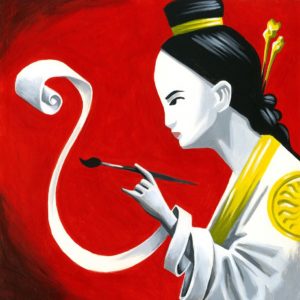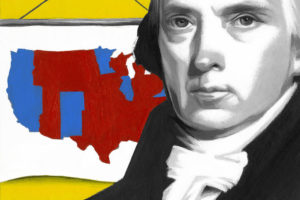A denim pick-up truck. Stetsons galore. And it all played out on a Texan football field. The star’s 12-minute, $20 million set arguably heralds a new cultural era
December 28, 2024

Beyoncé was joined by another US artist, Post Malone, and a jeans-clad jalopy ALEX SLITZ/GETTY IMAGES
Last week, for her NFL half-time Christmas Day concert, Beyoncé gave this long-discarded America its first public airing in nearly forty years. All the familiar elements were there: the bedazzling, the strutting, the clunky Yank Tanks — even the gleaming white horse which she rode into the stadium.

NETFLIX/BEYONCÉ
Beyoncé began her set with an off-stage rendition of 16 Carriages, a defiant ode to a hardscrabble childhood, quite possibly her own. The contrast between the grim lyrics and the blindingly white country and western aesthetic was the first of several striking dissonances during the performance. The 32-time Grammy winner has an almost unique ability to channel the zeitgeist into politically charged songs that still have mainstream appeal.
American audiences know that when Beyoncé sings, she isn’t simply putting stories to music, she is communicating a series of messages that collectively form a meta-commentary about what it means to be a person of colour in white America today.
Viewers got an eyeful of the extra-white teeth, the extra-big cars, the extra-wide shoulder pads, and saw the return of 1980s Dallas chic when everybody wanted to own a pair of cowboy boots and the whole world was obsessed with who shot JR. The Guardian waxed lyrical about the joy and playfulness of Beyoncé’s routines rather than the charged racial undertones.
The world’s reaction to the Christmas Day concert was similarly context-free. They took in the unbridled exuberance of Beyoncé’s version of Pop Americana, and saw only, as British viewers did, the 1980s-style flashiness that accompanied America’s resurgence under Ronald Reagan.
But there is more going on. There’s been a seismic shift in how America views itself. In recent years the country’s self-confidence has been dented. The combination of Black Lives Matter, Maga, #MeToo, QAnon, Stop the Steal, the Anti-Vax Movement and cancel culture in general has achieved what Vietnam, the oil crisis, 9/11, the Great Recession, and Covid-19 could not: turn America from an overly positive country into a hyper-negative one.
Americans are feeling bad about themselves, their country, and their history. Those who are not angry are anxious.
Donald Trump’s recent victory was his way of overturning that. A promise of what life could be like in the 80s, America’s boom time. Whereas Reagan projected an open-handed, “what’s-not-to-like?” image, a movie star straight from a Western, now we have a loud, close-fisted, angry, defensive kind of brashness.
Trump’s election promises to enact foreign tariffs, stay out of foreign conflicts, and deport more than a million illegal immigrants are a flat-out contradiction of Reagan’s pro-immigration, pro-trade, pro-American interventionism. Almost by sheer luck, the 40th president proved that the occasional arms race can be good for capitalism. But history offers multiple examples of what price controls coupled with isolationist policies does to a country.
In Beyoncé’s America, both sides can co-exist.

An image of Trump in the moments after an assassination attempt in July could define the era /EVAN VUCCI
To my mind, Beyoncé was telling Americans to move on and embrace the now. It isn’t about slick LA or the liberal seaboard, but heartland Americana. Her performance was a carefully curated smorgasbord of nods and references to local and national symbols. She sang Dolly Parton’s Jolene, but her backing singers were country music singers who are also black women; she used a 200-strong marching band, but an all-black one recruited from one of the country’s historically black universities.

NETFLIX/BEYONCÉ
Texas, and Houston specifically, received a royal wave with line dancing, rodeo stars, and the traditional homecoming parade, complete with car cavalcade and not one but two homecoming queens, both former Texas beauty pageant winners.
Hispanic culture was also a beneficiary of Beyoncé’s cultural largesse with her mariachi-inspired costume decorations, and the deployment of Lowrider Impala Chevrolets, a ban on which was recently lifted by the governor of California, Gavin Newsom. A civilian truck was was clad in denim in an homage to Beyoncé’s song, LEVII’S JEANS.

Beyoncé was joined during the performance by her 12-year-old daughter Blue Ivy DAVID J PHILLIP
That said, the appearance of an American flag shrouded in sheet plastic was one of the biggest controversies of the performance. One half of the angry sides of America objected to its presence at all, another complained it was insufficient. The rest were anxious about its ambiguity — was it an embrace or rejection of American values? Was Beyoncé ruining country music, a sacred American institution, with her non-white themes, rhythms and tropes, or reinventing it?

YOUTUBE
2025 may show that neither interpretation of Beyoncé’s half-time concert was grounded in any sort of reality. I fear that Beyoncé’s “playful” references to a time when the Dukes of Hazzard could be watched without cringing were not meant to be taken literally. That America is not coming back. However, it will take a great deal more than twelve minutes of foot-stamping glory to usher in the other America, the one where self-hatred gives way to self-reinvention.









